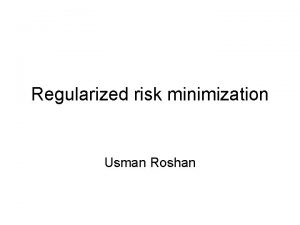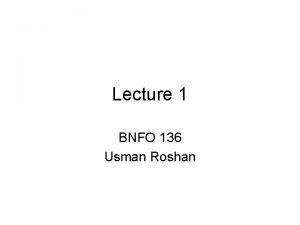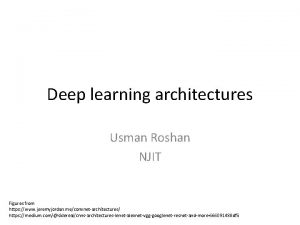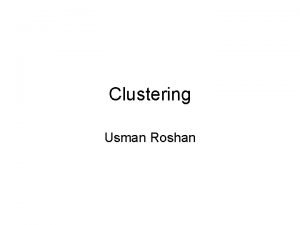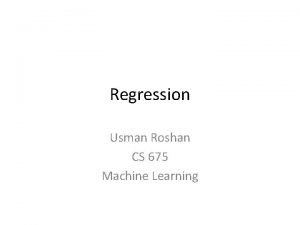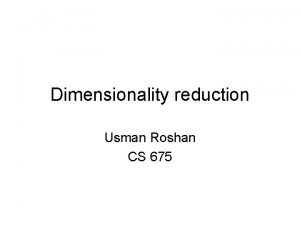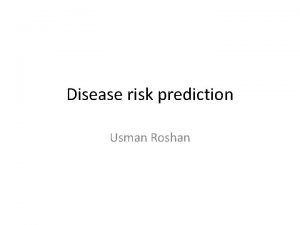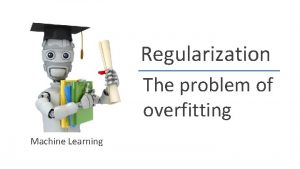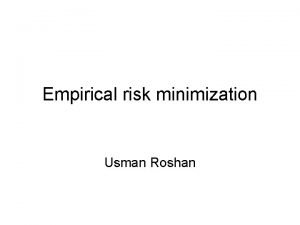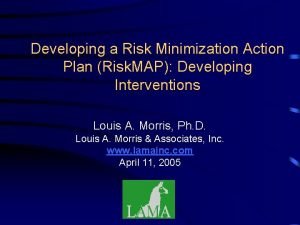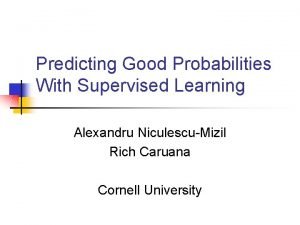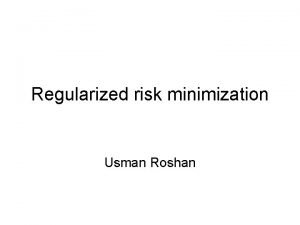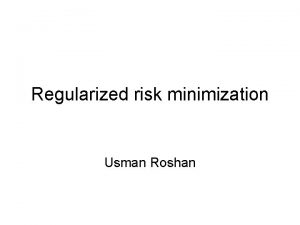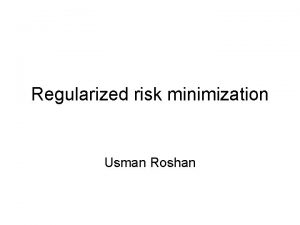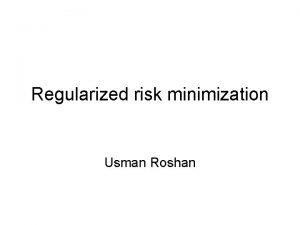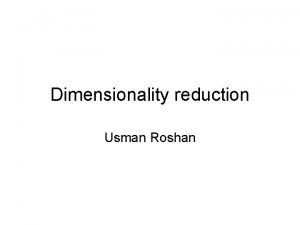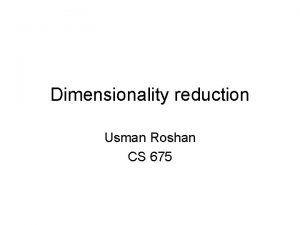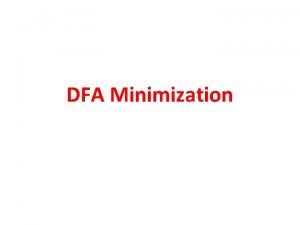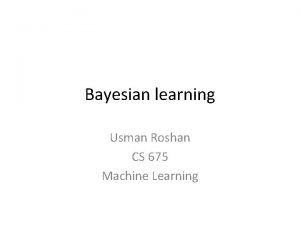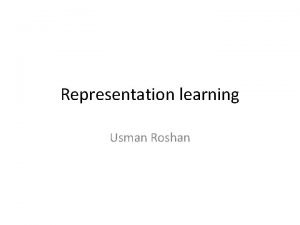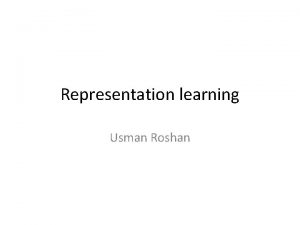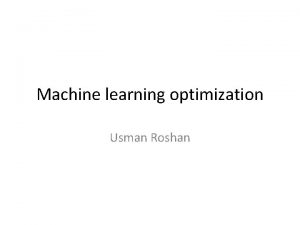Regularized risk minimization Usman Roshan Supervised learning for


![Loss function • Loss function: c(x, y, f(x)) • Maps to [0, inf] • Loss function • Loss function: c(x, y, f(x)) • Maps to [0, inf] •](https://slidetodoc.com/presentation_image/3f77c6bdba3c3e42f07af9c4d3c14a0c/image-3.jpg)












- Slides: 15

Regularized risk minimization Usman Roshan

Supervised learning for two classes • We are given n training samples (xi, yi) for i=1. . n drawn i. i. d from a probability distribution P(x, y). • Each xi is a d-dimensional vector (xi in Rd) and yi is +1 or -1 • Our problem is to learn a function f(x) for predicting the labels of test samples xi’ in Rd for i=1. . n’ also drawn i. i. d from P(x, y)
![Loss function Loss function cx y fx Maps to 0 inf Loss function • Loss function: c(x, y, f(x)) • Maps to [0, inf] •](https://slidetodoc.com/presentation_image/3f77c6bdba3c3e42f07af9c4d3c14a0c/image-3.jpg)
Loss function • Loss function: c(x, y, f(x)) • Maps to [0, inf] • Examples:

Test error • We quantify the test error as the expected error on the test set (in other words the average test error). In the case of two classes: • We want to find f that minimizes this but we need P(y|x) which we don’t have access to.

Expected risk • Suppose we don’t have test data (x’). Then we average the test error over all possible data points x • This is also known as the expected risk or the expected value of the loss function in Bayesian decision theory • We want to find f that minimizes this but we don’t have all data points. We only have training data. • And we don’t know P(y, x)

Empirical risk • Since we only have training data we can’t calculate the expected risk (we don’t even know P(x, y)). • Solution: we approximate P(x, y) with the empirical distribution pemp(x, y) • The delta function δx(y)=1 if x=y and 0 otherwise.

Empirical risk • We can now define the empirical risk as • Once the loss function is defined and training data is given we can then find f that minimizes this.

Bounding the expected risk • Recall from earlier that we bounded the expected risk with the empirical risk plus a complexity term. • This suggests we should minimize empirical risk plus classifier complexity.

Regularized risk minimization • Minimize • Note the additional term added to the empirical risk. This term measures classifier complexity.

Representer theorem Plays a central role in statistical estimation Taken from Learning with Kernels by Scholkopf and Smola

Regularized empirical risk • Linear regression • Logistic regression • SVM

Single layer neural network Linear regression regularized risk: Single layer neural network regularized risk:

Other loss functions • From “A Scalable Modular Convex Solver for Regularized Risk Minimization”, Teo et. al. , KDD 2007

Regularizer • L 1 norm: • L 1 gives sparse solution (many entries will be zero) • Logistic loss with L 1 also known as “lasso” • L 2 norm:

Regularized risk minimizer exercise • Compare SVM to regularized logistic regression • Software: http: //users. cecs. anu. edu. au/~chteo/BMRM. html • Version 2. 1 executables for OSL machines available on course website
 Expected risk minimization
Expected risk minimization Bnfo
Bnfo Usman roshan njit
Usman roshan njit Luxborg
Luxborg Usman roshan
Usman roshan Usman roshan
Usman roshan Usman roshan
Usman roshan Usman roshan
Usman roshan Usman roshan
Usman roshan Supervised learning dan unsupervised learning
Supervised learning dan unsupervised learning Data mining unsupervised learning
Data mining unsupervised learning Andrew ng house
Andrew ng house Empirical risk minimization python
Empirical risk minimization python Risk minimization action plan
Risk minimization action plan Liquidity measures
Liquidity measures Alexandru niculescu-mizil
Alexandru niculescu-mizil
